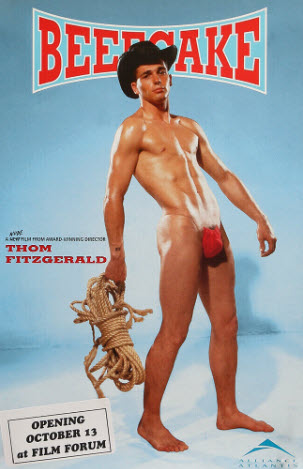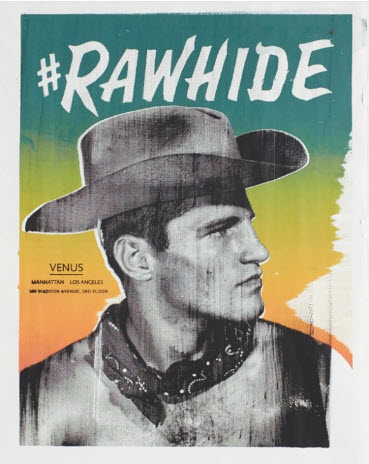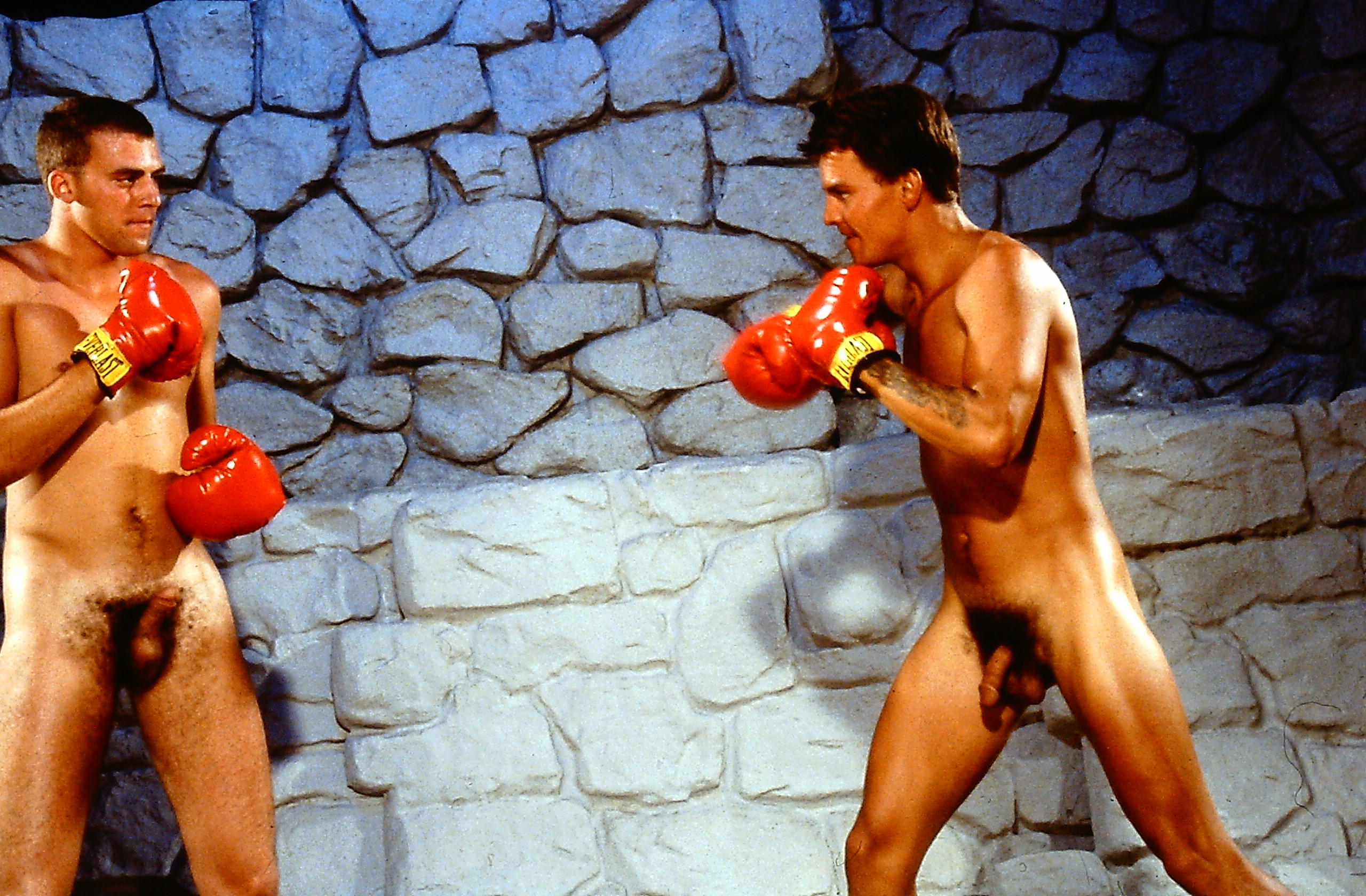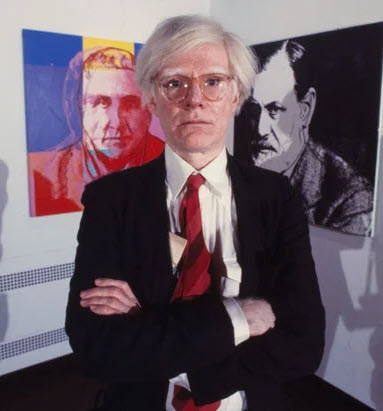ROUND 'EM UP! MIZER'S COWBOYS ON DISPLAY AT #RAWHIDE EXHIBIT THIS SUMMER
Bob Mizer's captivating representation of 'bad boys' like bikers and hoodlums are a staple of his work -- but he was just as well known for his...

There's plenty to enjoy about the very first full-length film about Bob Mizer -- but there's plenty of misinformation to address, too.
 Loyal followers and supporters of the Bob Mizer Foundation are likely familiar with director Thom Fitzgerald’s “Beefcake” (1998), a docudrama that explores the early years of the Athletic Model Guild. The film, available on DVD, does portray Mizer (portrayed by Daniel MacIvur) as a perfectionist, a quasi-workaholic, the true north of his models’ moral compass, and, most importantly, a strong supporter of free speech.
Loyal followers and supporters of the Bob Mizer Foundation are likely familiar with director Thom Fitzgerald’s “Beefcake” (1998), a docudrama that explores the early years of the Athletic Model Guild. The film, available on DVD, does portray Mizer (portrayed by Daniel MacIvur) as a perfectionist, a quasi-workaholic, the true north of his models’ moral compass, and, most importantly, a strong supporter of free speech.
Interspersed among dramatizations of an obscenity trial at which Mizer was front and center are interviews with some of his real-life models and contemporaries, including model Joe Leitel; Joe Dallesandro, the golden boy of pop artist Andy Warhol’s Factory; Mizer’s attorney and friend Wayne Stanley, who tried unsuccessfully to keep AMG afloat in the years after Mizer’s death; and fitness guru Jack LaLanne, whose presence in a film oozing with both blatant and subtle homoeroticism is ironic considering his history of homophobic remarks in media interviews.
The popping colors, playful banter, pompadour hairdos, and 1950s tough-guy clichés that swirl around Mizer’s models, all of whom are given fictional names, add an element of cotton-candy camp. The inclusion of syrupy sweet ditties such as “Mr. Sandman,” played over footage of some of Mizer’s original short films, only heightens the sanguine feel of Mizer’s growing empire of studs and celluloid.

Even with the sex between models and the consumption of drugs in Mizer’s home, some of Mizer’s boys appear adorably naïve, with one asking Mizer about the type of men who read his magazine Physique Pictorial. Mizer replies that the man who wishes to live as a picture of health and upstanding morals is the publication’s target reader. “These men admire you,” he says to the young man. “You’re their hero.”
The darker elements that surrounded Mizer’s nucleus of models are present here, too. Mizer watched his models carefully and, to the best of his ability, monitored their daily routines, health and diets. Despite his best efforts, “Beefcake” doesn’t shy away from the models’ use of illicit drugs, engagement in criminal activity, and sexual activities with clients.
In the periphery of both Mizer and his harem is Mizer’s mother, Delia, who maintained a significant presence in Mizer’s life in general and his business specifically. Fitzgerald’s film illuminates a woman about whom even the most educated Mizer adherent knows surprisingly little. Fitzgerald presents Delia Mizer as a woman of two minds – she adamantly disapproves of her son’s lifestyle and career (going so far as to admonish one of Mizer’s models toward the end of the film to leave her and her son alone), yet she cavorts playfully with some of Mizer’s men in other scenes.
 Though there is plenty to enjoy in this docudrama, some points of clarification are in order. Perhaps the most glaring is the statement that Mizer’s own mother sewed the posing straps for Mizer’s models. This myth, one commonly resurrected in numerous retellings of Mizer’s life and career, is easily the most pervasive. Though Delia Mizer oversaw the day-to-day operations of AMG while her son was incarcerated at a work camp in Saugus, California, in 1947, there is no proof that she took such a role in the company.
Though there is plenty to enjoy in this docudrama, some points of clarification are in order. Perhaps the most glaring is the statement that Mizer’s own mother sewed the posing straps for Mizer’s models. This myth, one commonly resurrected in numerous retellings of Mizer’s life and career, is easily the most pervasive. Though Delia Mizer oversaw the day-to-day operations of AMG while her son was incarcerated at a work camp in Saugus, California, in 1947, there is no proof that she took such a role in the company.
An early scene in the film shows a 12-year-old Bob Mizer photographing a nude young man in his attic bedroom in 1934. Ever the consummate professional, Bob directs his model on how to sit and how to smirk, and he even uses his mother's wedding dress as a backdrop. Delia catches the boys in the act and admonishes them. This scene, as far as we can gather from poring over the boy's diaries, never occurred. Mizer didn't even pick up a camera until late into his teenage years.
Much of the film surrounds the models not just working at the Mizer home, but living there as well. Though Mizer's sprawling compound was heavily populated with his models after Delia's death in September 1964 (Mizer himself feeling a sense of greater independence and artistic freedom), there is no evidence that anyone but the occasional boarder shared the Mizer household in the early days of AMG.
 "Beefcake" places a special focus on heroin use among Mizer's 1950s models and their acquaintances. Again, though heavy drug use was characteristic of Mizer's later models, the lives of his earlier models look to be devoid of such indulgences.
"Beefcake" places a special focus on heroin use among Mizer's 1950s models and their acquaintances. Again, though heavy drug use was characteristic of Mizer's later models, the lives of his earlier models look to be devoid of such indulgences.
The timeline of Mizer’s court case fails to follow his real-life legal woes as well. Mizer was imprisoned in Saugus in 1947 for contributing to the delinquency of a minor, and convicted of distributing obscene material through the mail in 1954 (the ruling was overturned a few years later). In “Beefcake,” one of Mizer’s models testifies that he is 16 years of age, giving a birth year of 1944. This would incorrectly place the court case in 1960. Since the court case portrayed here involves fictional characters, it's more likely that the case is merely a mashup of several of the real-life cases in which Mizer was enmeshed. It's unfortunate, too, that Mizer is portrayed as a conniving sexual deviant, bent on exploiting his models for sexual gratification. Mizer's fatherly guidance of the men is present in the film, true, but that personality trait seems to take a backseat to the more salacious assumption that Mizer bedded many of his models -- and again, though this did happen on occasion, it didn't occur with the frequency that is suggested in the film.
 Even the seemingly smaller details are noticeable here. Bob Mizer discovers one of his most coveted models, the fresh-faced Neil O'Hara (played by Josh Peace) outside L.A.'s Grauman's Chinese Theater and takes the young lad to a muscle beach. Mizer casually hands Neil a copy of his "1,000 Model Directory" as a guide to the new world into which he could enter. Neil enters into the film in the very early days of Physique Pictorial; the model directory wasn't published until 1957 -- and Mizer had long since abandoned his regular visits to the muscle beaches and boardwalks of L.A.
Even the seemingly smaller details are noticeable here. Bob Mizer discovers one of his most coveted models, the fresh-faced Neil O'Hara (played by Josh Peace) outside L.A.'s Grauman's Chinese Theater and takes the young lad to a muscle beach. Mizer casually hands Neil a copy of his "1,000 Model Directory" as a guide to the new world into which he could enter. Neil enters into the film in the very early days of Physique Pictorial; the model directory wasn't published until 1957 -- and Mizer had long since abandoned his regular visits to the muscle beaches and boardwalks of L.A.
Unfortunately, the film treats Mizer’s career after 1964 with only a cursory glance and only as an afterthought. Here, my bias might be revealed, as I am much more interested in Mizer’s later work and business dealings.
At its most basic, “Beefcake” is a fun, campy, bubblegum romp through the golden age of beefcake magazines. Enjoy the film and the information it provides armed with these corrections, however, so you may know the story as it really happened.

Bob Mizer's captivating representation of 'bad boys' like bikers and hoodlums are a staple of his work -- but he was just as well known for his...

Author’s note: This is the second part of a four-part series designed to introduce the novice to photographer and filmmaker Bob Mizer. We will post a...

At the same time photographer and filmmaker Bob Mizer’s empire expanded and embraced nudity in front of the lens at his L.A. compound, on the other...

“He listed his occupation as “short order cook,” said he was also a dishwasher, and his greatest ambition was to own his own Italian restaurant.”